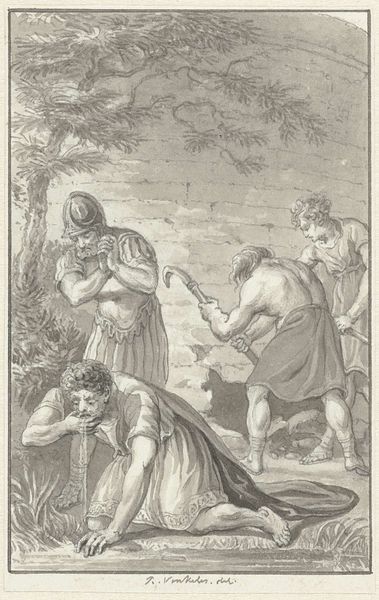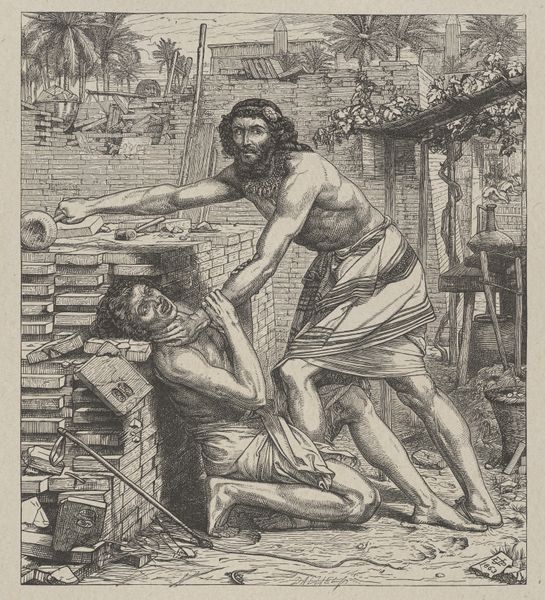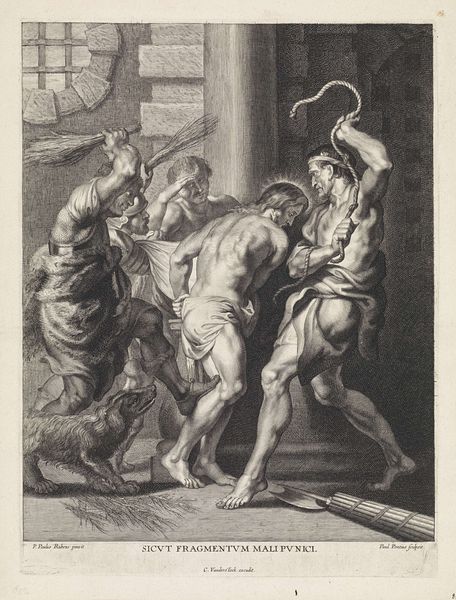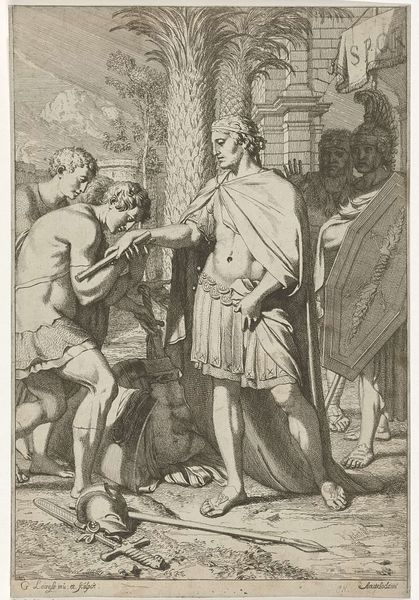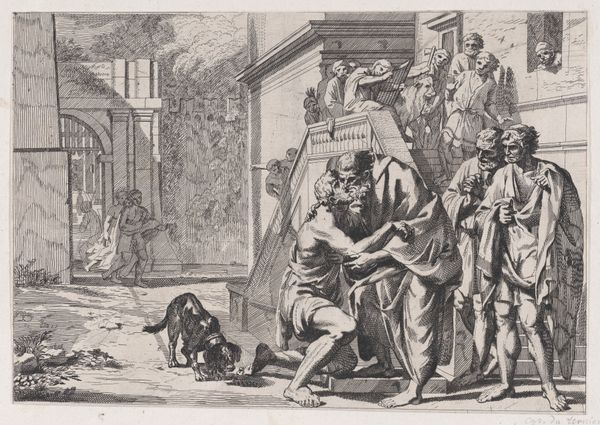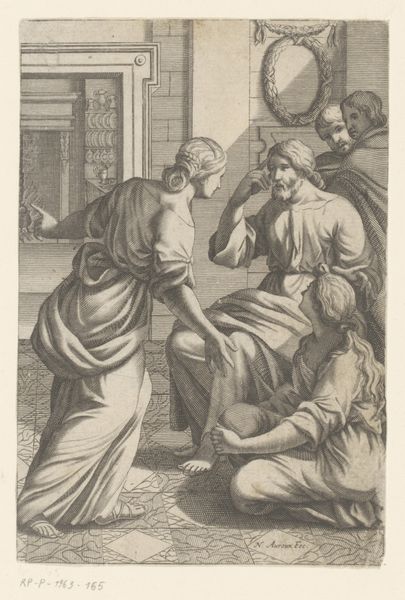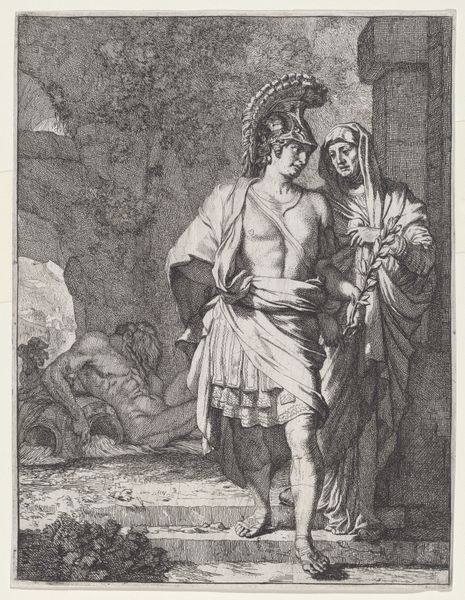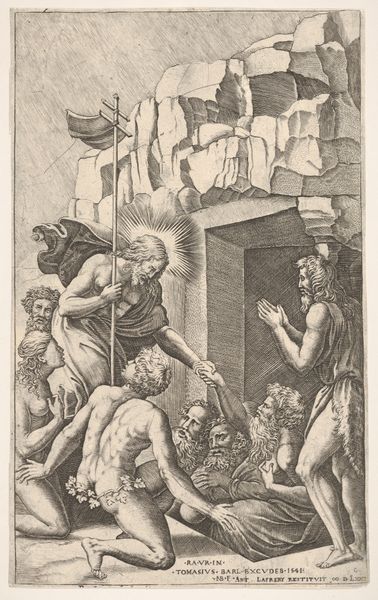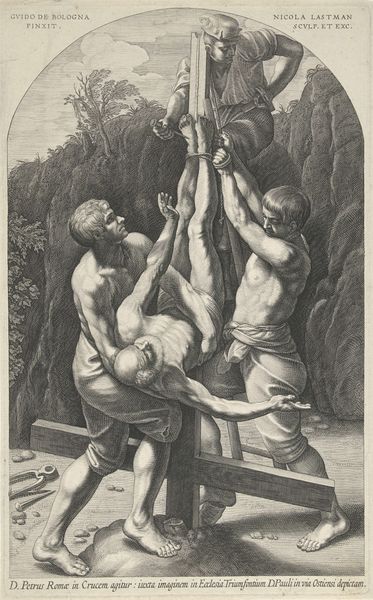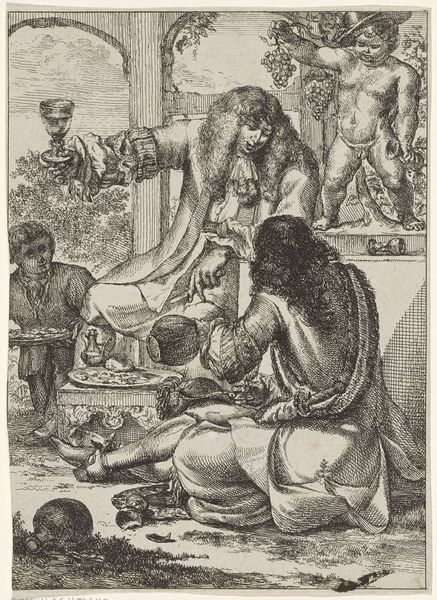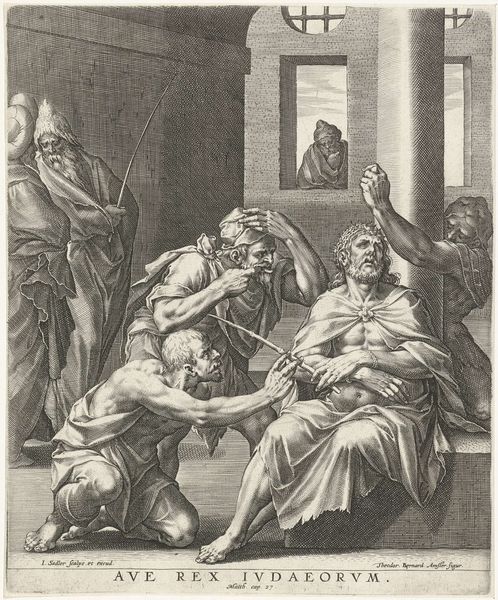
print, engraving
#
narrative-art
# print
#
figuration
#
romanticism
#
history-painting
#
engraving
Dimensions: height 133 mm, width 83 mm
Copyright: Rijks Museum: Open Domain
Curator: Editor: Here we have Ludwig Gottlieb Portman's "The Humiliation of Nero," created in 1804. It's an engraving and depicts a pretty awful scene. Nero looks to be violently ill on the ground. I’m struck by how this moment of debasement is immortalized in a print – meant to be reproduced and circulated. What can you tell me about this piece? Curator: The choice of engraving for this scene is particularly interesting. The medium itself speaks to the democratization of imagery and the narrative Portman is conveying. Prints, unlike paintings, were relatively easily reproducible. Consider how the image, therefore the *story* of Nero’s humiliation, gains currency and becomes a commodity. What does it mean to disseminate such an image, and who benefits? Editor: That makes sense. So, is the point of the work to highlight how quickly an emperor’s reputation, something built on power and authority, could be undone through mass-produced images and accessible to all? Curator: Precisely. The availability of this print challenges the established power dynamics. Think about who had access to portraits of Nero celebrating his power. Now consider who can access *this* image. It hints at shifting social structures and a broader distribution of knowledge. Consider, too, how the physical act of creating an engraving--the labor involved, the skill--contributes to this new vision of Nero. What do you think about the role of labor here? Editor: That's a good point; someone meticulously carved this image. It really humanizes the making of art. It makes the artwork feel less about glorifying a specific person from the past, but rather more about creating awareness about their history via meticulous reproduction. The materiality makes the historical concept easier to absorb and creates this physical bridge through history. Curator: I agree entirely. Looking at this work, the process and materials force us to question the intent behind depicting historical figures in art, considering both the means of production and the audience receiving it. Editor: Thank you for the insight. I see this artwork completely differently now.
Comments
No comments
Be the first to comment and join the conversation on the ultimate creative platform.
